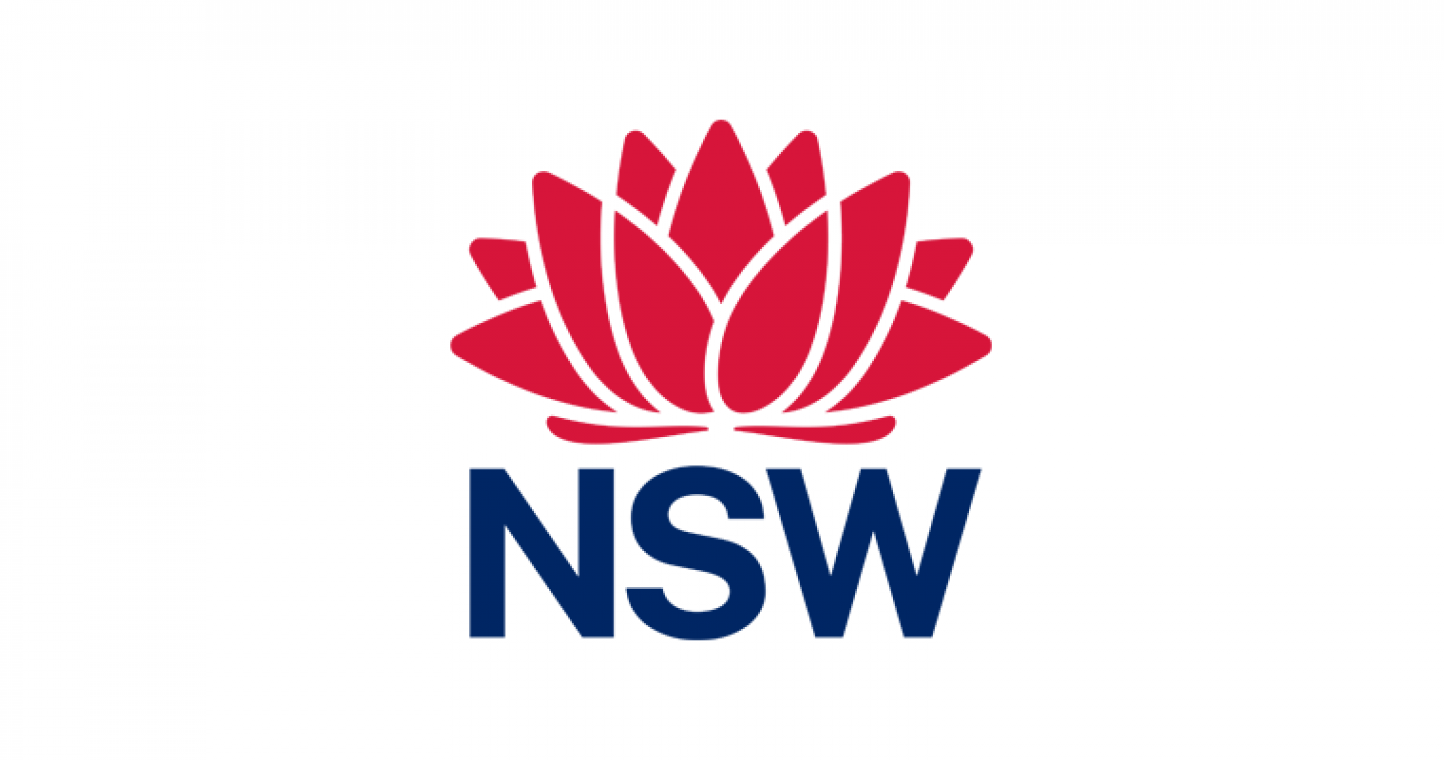Summary:
- The fifth mass coral bleaching event since 2016 is unfolding on the Great Barrier Reef.
- AIMS scientists have been working with the Reef Authority to monitor the Reef from the air to assess the spatial extent of coral bleaching.
- For the past few months they have also been underwater to understand the reef response to the accumulating heat, from onset through to the peak of bleaching, and to document the prevalence of fully bleached corals.
- Underwater teams are also collecting data to identify naturally heat resilient corals to better understand adaptation potential within the reef community, to improve reef restoration practices.
Australian Institute of Marine Science (AIMS) experts stepped up research on the Great Barrier Reef early this summer to learn more about the effects of heat stress on corals, to assist reefs in the future.
The 2024 mass bleaching event, announced by the Great Barrier Reef Marine Park Authority on March 8, is the fifth such event for the Great Barrier Reef since 2016.
It provides a sobering but important moment to progress AIMS’ knowledge and tools to understand the future of reefs, as well as help them adapt to, and recover from, the effects of climate change.
AIMS Recovery, Adaptation and Restoration Research Program Director Dr Line Bay said close to 40 AIMS scientists working across several teams were conducting targeted surveys and research at more than 40 reefs.
“We are working across the full range of heat stress, from the Torres Straits and Lizard Island in the north down through the Cairns-Townsville region and in the southern Reef throughout the Swains, Capricorn Bunkers and Keppel Island group,” she said.
“This comprehensive approach to coral bleaching will help fast track the knowledge needed for more effective reef management in a warming world.”
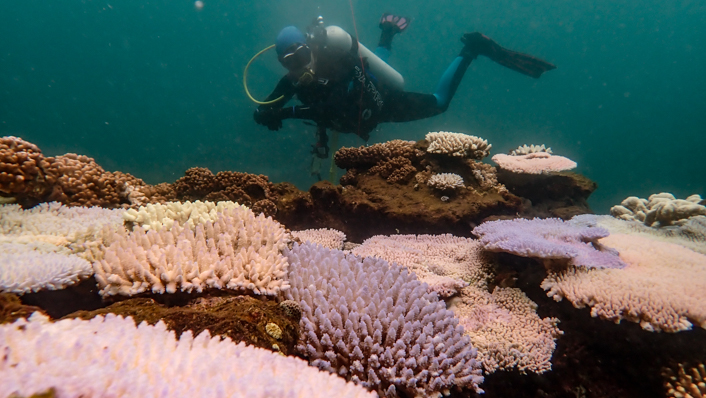
Deep dive into bleaching monitoring
Preparations for field activities began months ago, as the risk of a marine heatwave became more likely.
Coral reef biologist Dr Neal Cantin said that historically, coral bleaching data were collected once heat stress accumulation had reached its peak and coral colony bleaching responses had occurred.
“There is less information about the early beginning phases leading up to coral bleaching across the length of the Great Barrier Reef,” he said.
“We began studying reef communities early this year, as the heat stress began, and will continue to do so during this mass bleaching event, through to after the peak of the heat stress.”
Dr Cantin said it was crucial for reef scientists to understand if coral species within a reef community were responding differently to warmer temperatures.
“Understanding more about the variation within and between reefs and regions across the Reef can help us identify which reefs are most likely to be impacted by climate stress and if temperature tolerance is changing in an era of more frequent bleaching events,” he said.
“This information can be used to guide reef management and restoration efforts.
“We are collecting data to answer questions such as: which corals within the reef community are the most sensitive to heat? Is this sensitivity changing over time? Are corals adapting to marine heatwaves? And, which corals recover the fastest?
“These in-water observations will be combined with the aerial survey observations to inform and quantify the spatial extent of bleaching across both regional heat stress exposures and depth range gradients.”
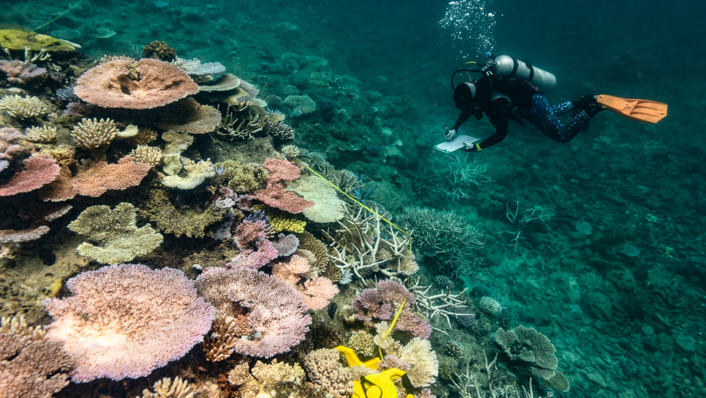
Aerial surveys provide a robust overview of bleaching across the Reef, allowing us to compare bleaching events between years, from when the aerial surveys began in 1998.
The new, targeted, bleaching research was designed to complement existing AIMS surveys, integrating with the Long-Term Monitoring Program (LTMP) and the ongoing EcoRRAP surveys that are studying fine-scale reef community changes over time.
Information on bleaching thresholds (the time it takes for a coral to bleach at a particular temperature) will be compared with data collected over the past two to three decades, to determine if the thresholds are changing.
Developing AI to analyse coral bleaching severity
AIMS lead data scientist Mathew Wyatt said AIMS was expanding its use of artificial intelligence (AI) to categorise the different stages of coral bleaching: no bleaching (healthy corals), minor partial bleaching, fully bleached white and fluorescent colonies, and recently dead.
These categories of colony response are crucial to understanding the impacts of coral bleaching.
Mr Wyatt is working with the science teams on the Reef to develop AI solutions to increase their efficiency in analysing high resolution images of bleached coral reefs from in-water surveys and to categorise the level of bleaching severity in individual colonies.
“AI will dramatically reduce the time it takes our coral scientists to analyse data from images, giving us a clear and rapid understanding of the severity of bleaching across the Reef, a process that can often take weeks to months when done manually,” he said.
“Currently, AI tools can only detect the fully bleached colonies within a reef. Developing the tools to capture the full spectrum of bleaching response will be ground-breaking and a crucial addition to communicating and assessing spatial variability of coral bleaching severity.”
Mr Wyatt said that once developed, this capability could be incorporated into ReefCloud, a globally-accessible digital platform designed by AIMS to support faster, more efficient reef monitoring to better inform reef management decisions.
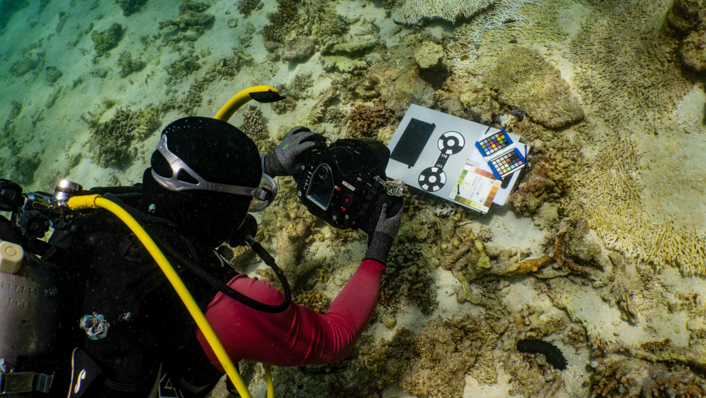
It’s in the genes: Identifying heat tolerant corals and understanding adaptation and breeding
AIMS coral scientist Dr Holland Elder said a key mission for AIMS was to investigate the genetics of bleaching resilience in corals to better understand how fast they could be adapting to rising temperatures.
“We know corals can pass bleaching tolerance on to their young through their genes, however we don’t know how fast such genetic adaptation is occurring, or how it might vary across species and the Reef,” she said.
“By comparing the genes of bleaching resilient corals to those that are not resilient, we will be better able to predict how reefs will fare as temperatures increase.
“The bleaching resilient corals we identify will be vitally important for reef restoration and adaptation activities on the Reef.
“Corals in the wild showing signs of heat adaptation are being marked to be later sampled and bred in the National Sea Simulator, with the progeny deployed on the Reef in 2025 for further research.
“Ultimately, the aim is to propagate and deploy bleaching resilient corals en masse to optimise reef restoration and adaptation activities to help the Reef better resist warming ocean temperatures into the future.”
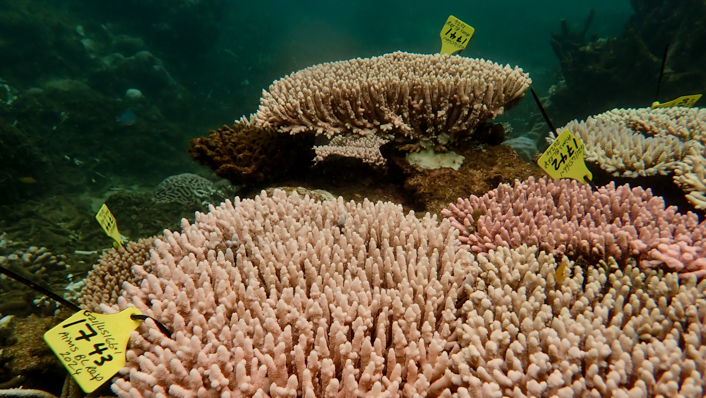
Studying the role of symbiotic algae in heat resistant corals
Senior Research Scientist Dr Matthew Nitschke said a key factor in corals becoming more heat resistant may be found in the symbiotic algae that inhabit their tissues.
“AIMS research has shown that introducing laboratory-selected symbionts that are heat resilient into corals can increase the heat tolerance of the corals themselves,” he said.
“We will track the corals’ recovery to increase our understanding of boosting corals’ heat tolerance via symbiont manipulation.”
In addition to selecting heat tolerant symbionts in the lab, AIMS is seeking to identify naturally tolerant symbiotic algae on the Reef. These will be isolated from bleaching-resistant corals for further study.
“We have sampled symbiotic algae of reef corals before heat-stress and now during the bleaching event,” Dr Nitschke said.
The AIMS Symbiont Culture Facility is culturing resilient algal symbionts of corals in a bid to supply symbiont-based coral restoration efforts that aim to enhance corals.
Data from conditions above and below the water
In addition to the coral research, AIMS has a network of oceanographic instruments and real-time weather stations delivering crucial in-water data about conditions above and below the water, with our partners at Integrated Marine Observing System (IMOS).
This includes sensors at more than 100 sites across the Reef providing detailed annual information on water temperatures.
AIMS has been recording sea surface temperatures since 1987, providing an historical baseline with which to compare current warming trends across the Reef.
AIMS also has oceanographic instruments that measure currents and salinity, to explore the physical factors that could explain variations in reef response.
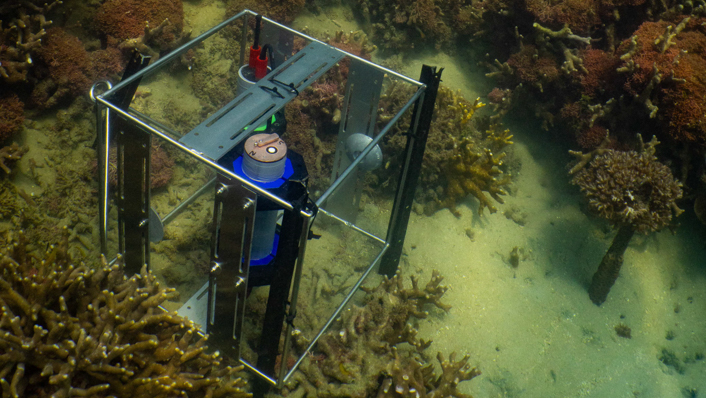
Dr Cantin said new sensors had recently been added to the network, including upgrading AIMS’ ability to record underwater light levels – a key factor that could intensify thermal stress for corals during warm calm summer periods on the Reef.
“The network upgrade will provide data on variation across reefs in temperature and light levels, which could explain differences in the bleaching response we see between corals,” he said.
What can seawater microbes tell us?
AIMS bioinformatician and research scientist Dr Patrick Laffy is leading efforts monitoring changes in seawater microbial communities during this thermal stress event.
“Microbes are among the first responders on the Reef when conditions change,” he said.
“We are monitoring and profiling the changes in reef-associated microbes to identify microbes that can predict recovery outcomes in future thermal stress events.
“While we still have a lot to learn about the microbial communities in seawater, this work holds great promise.
“It may be able to provide predictive monitoring tools that not only tell us about which reefs are under most threat but also those that have greater resilience in a warming world.”
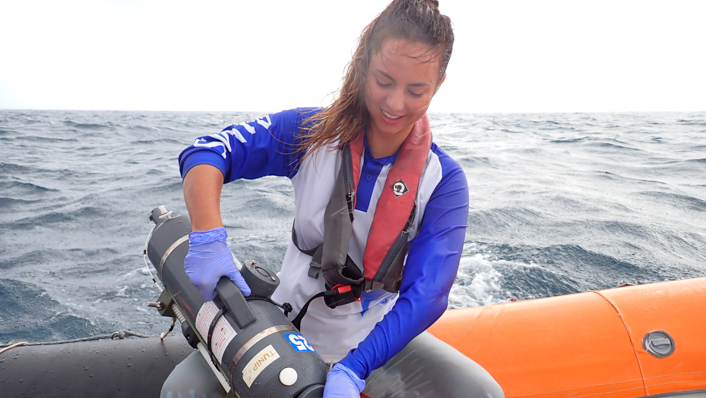
Why are coral reefs at risk?
Australia’s coral reefs face their greatest threat in summer from the effects of marine heatwaves, tropical cyclones, and flooding.
Ocean temperatures worldwide are rising, due to climate change.
Corals are sensitive to unusual conditions outside the normal annual temperature range, such as both warm or cool temperatures. Marine heatwaves over extended periods, particularly during summer, can trigger coral bleaching.
Corals form close relationships with a range of microbial partners, all of which can influence their bleaching sensitivity.
During bleaching, a coral will expel their symbiotic algae from its tissues turning it white. It is not dead, but very stressed. It may die if the conditions are prolonged or extreme. If warmer than normal ocean conditions continue across a large area of the ocean, the Reef is at risk of mass coral bleaching.
Coral bleaching is increasing in intensity and frequency, with the fifth widespread bleaching event recorded on the Great Barrier Reef since 2016 currently unfolding.





